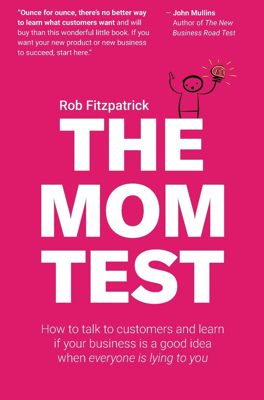Commitment and Advancement
The transition from gathering customer insights to presenting a product opens possibilities for “advancement” in the sales process, where customers are pushed to the next actionable step. This process helps in distinguishing between genuine leads and "zombie leads" — prospects who seem interested but do not commit to any action, leaving them in a perpetual state of non-commitment.
Achieving real advancement requires pushing for commitments that move the conversation towards either a clear yes or no, eliminating ambiguous or polite but non-committal feedback. Commitments are signs that a potential customer is serious and can involve sacrifices of time, reputation, or money:
Time Commitments: Scheduling a next meeting with clear goals, providing detailed feedback on prototypes, or using a trial for a significant period.
Reputation Risk: Introductions to significant stakeholders like team members or decision-makers, or agreeing to give a public testimonial.
Financial Commitments: Actions such as agreeing to a letter of intent, making a pre-order, or placing a deposit.
Differentiating between good and bad meetings is essential. A good meeting results in a clear next step, such as a customer agreeing to use a trial or introduce the product to their team. In contrast, a bad meeting often ends with hollow compliments or vague future promises without any tangible advancement or commitment.
Addressing the outcome of meetings involves ensuring clarity about the next steps and seeking concrete commitments that validate genuine interest or reveal a rejection. The discussions identified as successful directly reflect a deeper engagement with the product, often involving concrete steps towards implementing or buying it.
Handling and Converting Meetings
Rob Fitzpatrick emphasizes the importance of converting ambiguous meetings into opportunities for advancement by advocating for specific commitments during the conversation. This shift in perspective requires a subtle approach as the focus is not on forcing a commitment but understanding the customer’s true position.
Meetings that end on vague terms or with general expressions of interest need to be scrutinized. For example, a customer offering introductions "when you're ready" should be pressed for what "ready" means and potentially to solidify that vague promise into a specific actionable commitment immediately.
The concept extends beyond just keeping interest alive; it strategically weeds out the weak leads from those genuinely interested, saving time and focusing energy on prospective customers most likely to convert.
In summary, this chapter outlines the importance of pushing for customer commitments as a crucial step in validating the business's product and advancing sales discussions productively. These commitments help in distinguishing between polite interest and substantive business intent, thereby streamlining the sales funnel to focus on prospects with real potential.
